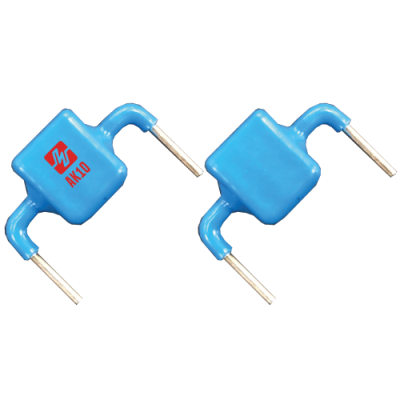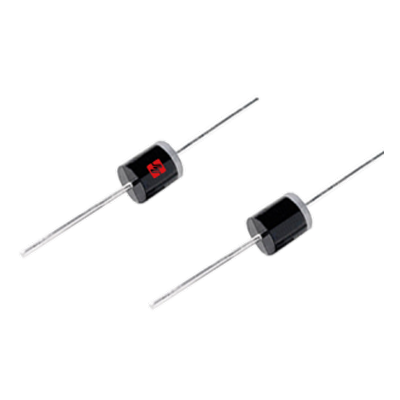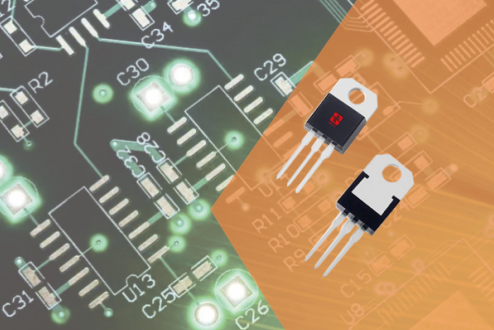Among electronic components, varistors are also relatively common. Compared with ESD electrostatic diodes and TVS tubes, varistors play a large role in circuit protection. Many people may not be familiar with them, but regardless of their role in circuit design There should be a way to quickly select a varistor during selection or selection.
Overview
The varistor is connected in parallel in the circuit. It is relatively sensitive to voltage (up to a certain abnormally high voltage). At normal operating voltage, it is equivalent to an insulator. When the voltage is abnormally high, the resistance value instantly becomes very small. , the current flows back to the front end through the varistor and pulls the fuse. If the voltage is relatively high for a long time, it will breakdown instantly, protecting the back-end circuit.
Tips for quickly selecting a varistor:
1) Working environment:
It should be within the range specified by the technical conditions, ambient temperature: -40C ~ +85℃.
2) Select the varistor according to the power supply voltage:
The so-called varistor voltage is the breakdown voltage or threshold voltage. Refers to the voltage value under a specified current. In most cases, the voltage value is measured when 1mA DC current is passed into the varistor. The varistor voltage range of its products can range from 10-9000V. The correct choice can be made according to specific needs. Generally V1mA=1.5Vp=2.2VAC. In the formula, Vp is the peak value of the rated voltage of the circuit. VAC is the effective value of the rated AC voltage. The selection of the voltage value of ZnO varistor is crucial, as it is related to the protection effect and service life. For example, the rated power supply voltage of an electrical appliance is 220V, then the voltage value of the varistor is V1mA=1.5Vp=1.5×1.414×220V=476V, V1mA=2.2VAC=2.2×220V=484V, so the breakdown voltage of the varistor is optional. Between 470-480V.
3) Selection of traffic flow:
The so-called current capacity, that is, the peak value of the maximum pulse current is the maximum pulse current when the change of the varistor voltage does not exceed ±10% for the specified inrush current waveform and the specified number of inrush currents when the ambient temperature is 25°C. value. In order to extend the service life of the device, the amplitude of the surge current absorbed by the ZnO varistor should be less than the maximum flow rate of the product given in the manual. However, from the perspective of protection effect, it is better to select a larger flow rate. In many cases, it is difficult to accurately calculate the actual flow rate, so products of 2-20KA are selected. If the flow rate of the product on hand cannot meet the usage requirements, several single varistors can be used in parallel. The varistor after parallel connection will remain unchanged, and its flow rate is the sum of the values of each single varistor. The volt-ampere characteristics of parallel connected varistors are required to be as consistent as possible, otherwise uneven shunting may occur and damage the varistors.
4) Selection of clamping voltage:
The pressure-sensitive clamping voltage should not be greater than the voltage that the protected circuit or sensitive equipment can withstand.
5) Parallel connection of varistor:
When a single varistor cannot meet the nominal discharge current requirement, two or more should be used in parallel in the circuit. Sometimes in order to reduce the limit voltage, multiple varistors are connected in parallel even if the nominal discharge current meets the requirements. Special attention should be paid to the fact that when varistors are used in parallel, they must be carefully selected and paired with consistent parameters to ensure even distribution of current.
More information
You can view more product line information of varistor through the following method: https://semiware.com/pro-cat/varistor/. If you have technical questions, please contact our technical support engineers: fae01@semiware.com.

 Automotive TVSs
Automotive TVSs General TVS Diodes
General TVS Diodes High Reliability TVSs
High Reliability TVSs High Current TVSs
High Current TVSs Automotive ESDs
Automotive ESDs TVS Diodes Array
TVS Diodes Array MLVs
MLVs Polymers
Polymers High Reliability
High Reliability General Thyritors
General Thyritors Programmable Series
Programmable Series Automotive PLEDs
Automotive PLEDs Pled Protectors
Pled Protectors General Gas Tubes
General Gas Tubes Automotive GDTs
Automotive GDTs Glass Discharge Tubes
Glass Discharge Tubes General Varistors
General Varistors Sensitive SCRs
Sensitive SCRs SCRs
SCRs Triacs
Triacs 4-Quadrant Triacs
4-Quadrant Triacs Small Signal Mosfets
Small Signal Mosfets Power Mosfets
Power Mosfets Transistors
Transistors Bridge Rectifiers
Bridge Rectifiers Schottky Rectifiers
Schottky Rectifiers Switching Diodes
Switching Diodes Fast Recovery Diodes
Fast Recovery Diodes Rectifier Diodes
Rectifier Diodes Fast Recovery Diodes
Fast Recovery Diodes PTC
PTC Energy Storage
Energy Storage Vehicle Adapter
Vehicle Adapter Media Hub
Media Hub Interior Light
Interior Light Head Lighting
Head Lighting DC Charger
DC Charger PTC
PTC AC Charger
AC Charger BMS
BMS ADAS
ADAS BCM
BCM xDSL
xDSL Outdoor AP
Outdoor AP Set-top Box
Set-top Box PBX
PBX RRU
RRU BBU
BBU Power Supply
Power Supply Small Cell
Small Cell Cellular Base Station
Cellular Base Station IP Camera
IP Camera Security Camera
Security Camera NVR
NVR DVR
DVR POS
POS VR
VR UAV
UAV E-Bike
E-Bike PC
PC Pad
Pad Smart Lock
Smart Lock Mobile Phone
Mobile Phone Smart Watch
Smart Watch E-Cigarette
E-Cigarette TWS
TWS PV Inverter
PV Inverter Energy Storage
Energy Storage DC-DC Module
DC-DC Module Power Bank
Power Bank Fast Charging
Fast Charging Adapter
Adapter ECG monitor
ECG monitor Sphygmomanometer
Sphygmomanometer Electronic Scale
Electronic Scale Radiography
Radiography Exergen
Exergen Blood Glucose Meter
Blood Glucose Meter DC Motor
DC Motor PLC
PLC Smart Metering
Smart Metering Sensor
Sensor Power Line Carrier
Power Line Carrier Electricity Meter
Electricity Meter Elevator Call Board
Elevator Call Board Traffic Lighting
Traffic Lighting Solar Lighting
Solar Lighting Smart Lamps
Smart Lamps Led Lighting
Led Lighting StreetLight Controller
StreetLight Controller Dishwasher
Dishwasher Sweeping Robot
Sweeping Robot Smart TV
Smart TV Washing Machine
Washing Machine Smart Speaker
Smart Speaker Coffee Maker
Coffee Maker DC24V-P5a
DC24V-P5a KEY
KEY CAN
CAN NFC
NFC MIC
MIC Audio
Audio eSATA
eSATA GPS
GPS USB3.0
USB3.0 POE-10G-6KV
POE-10G-6KV AC220V-5KA
AC220V-5KA Semiware's over 300 interface protection solutions cover automotive electronics, industrial control, consumer electronics, and other industry sectors.
Semiware's over 300 interface protection solutions cover automotive electronics, industrial control, consumer electronics, and other industry sectors. To become an excellent comprehensive service provider of circuit protection solutions.
To become an excellent comprehensive service provider of circuit protection solutions. To become an excellent comprehensive service provider of circuit protection solutions.
To become an excellent comprehensive service provider of circuit protection solutions.

 简体中文
简体中文











